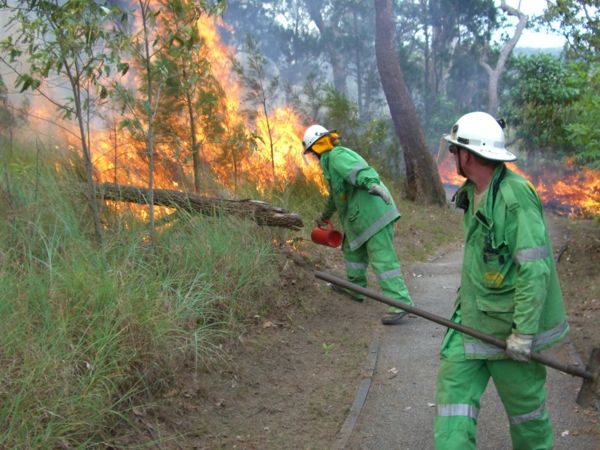
Aboriginal use of fire in land management has shaped the Australian landscape. Traditional mosaic burning, which promoted regrowth of grasses and encouraged game into the area, also helped avoid severe wildfires by preventing a build-up of fuel.
However, various areas of the Wet Tropics respond differently to fire, and careful management is needed to maintain healthy and diverse ecosystems.
The Wet Tropics Management Authority works to manage fire with the Queensland Parks and Wildlife Service, the Queensland Fire and Rescue Service, the Rural Fire Service and Aboriginal communities. Research and monitoring programs will give us a better understanding of the complex relationship between fire and the different ecosystems of the region.
Fire management of different ecosystems is discussed below. Wet Tropics ecosystems which require regular fire management can be viewed on the Conservation Strategy map.

Fire safety, rules and permits
For information about fire safety and when you are allowed to burn, you can download the brochure about fire management on the Cairns hillslopes. At some times of the year a total fire ban may be in place. When fires are permitted, a permit is required to burn any area measuring more than two metres in any direction. Your fire warden will advise on whether burning is permitted, and will set permit conditions to ensure the safety of neighbours and the surrounding area. You can find further information about QPWS fire management in National Parks website.
You learn about ecological burning download the brochure about fire management on the Cairns hillslopes.

Rainforest
The rainforest canopy shades out the inflammable grasses that fuel fires, protecting most of the forest from fire. However the rainforest edge is vulnerable to burning, and advances and retreats in response to fire. The most damaging are summer wildfires which can surge up hillslopes and scorch the edge of the rainforest. These fires can push the rainforest back several metres each time, causing a significant retreat over decades.
In areas of repeated fire damage at the edge of the rainforest, such as on the hillslopes around Cairns, replanting the rainforest can reduce the fire risk to neighbouring properties - a regenerated rainforest will shade out the grasses and undergrowth, and starve future fires of fuel.

Eucalypt forests and woodlands
These open forests need regular mild fires to survive. The seeds of some species germinate in the ash bed after fire, and rely on fire to
limit the competition from shrubs and grasses. Cool fires reduce the build up of grasses, undergrowth and leaf litter that could fuel a more intense and destructive fire.
Damaging fires are most likely to occur at the hottest and driest time of year, usually from October to January, when they can threaten native plants and animals over huge areas of land.
To avoid this, the relevant authorities light smaller, controlled fires during the winter months from June to September, when there is still moisture in the grass. These hazard reduction fires are usually carried out in a mosaic pattern every two to five years.

Wet sclerophyll - transitional forest
Some plant and animal species have adapted to live in wet sclerophyll forests - a fascinating ecotonal zone between the rainforests and the drier eucalypt country. This long narrow strip along the western hillslopes of the World Heritage Area has been subject to a range of logging and fire regimes over time. Further research is required to determine appropriate fire regimes for these tall eucalypt forests which develop a rainforest understorey without regular burning. They are importnat habitat for a range of arboreal and ground dwelling species such as the vulnerable yellow-bellied glider ajnd the endangered northern bettong.








